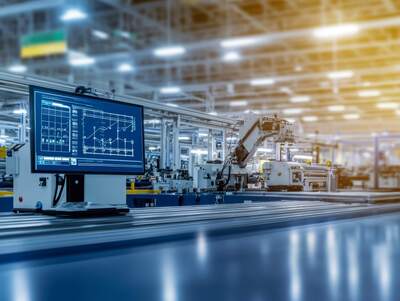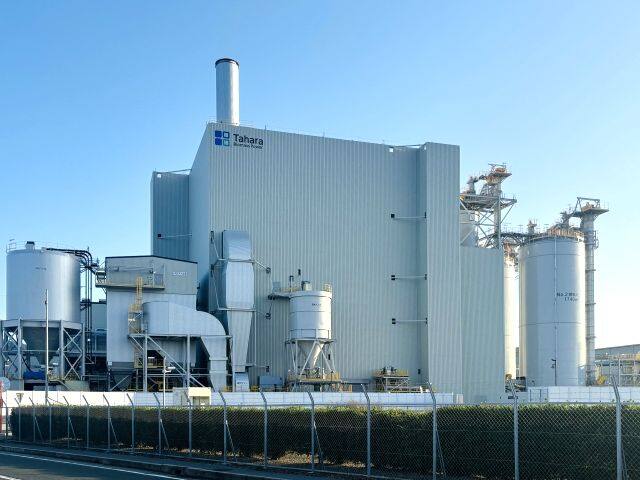Prevent Future Troubles with Failure Prediction! Achieve Stable Factory Operation with Vibration Sensors that Detect Abnormalities with High Precision
Stable factory operation is essential for boosting productivity. This section introduces vibration sensors and diagnostic systems, as well as the benefits of implementing a failure prediction system utilizing vibration sensors in large-scale manufacturing environments. Please refer to the information.
- Achieve stable plant operation through high-precision fault prediction
- Effective Trouble Prevention Methods Enabled by Diagnostic Technology
- Benefits of Implementing a Fault Prediction System Using Vibration Sensors in Large-Scale Factories
- Paving the Way for the Future of Factories! Preventive Maintenance Solutions Using the Wi-Fi Vibration Sensor “conanair”
Stable factory operation is essential for boosting productivity. This section introduces vibration sensors and diagnostic systems, as well as the benefits of implementing a failure prediction system utilizing vibration sensors in large-scale manufacturing environments.
Achieve stable plant operation through high-precision fault prediction


The smooth operation of factory equipment directly affects a company’s productivity and profitability. Unexpected stoppages can cause production delays and substantial losses. To address this issue, it is crucial to implement high-precision vibration sensors that can detect even the slightest abnormalities.
Machine Health Indicated by Vibration Data
A machine’s operational health is revealed through its vibration patterns. As components wear or shafts become misaligned, subtle shifts occur in vibration waveforms and frequencies. Vibration sensors capable of detecting these fine variations can identify early signs of abnormalities that are invisible to the naked eye. In this sense, vibration data serves as an objective 'health report' for industrial equipment.
Planned Preventive Maintenance via Diagnostic Systems
Data collected by high-precision vibration sensors is analyzed in detail by specialized diagnostic systems. Based on the collected vibration data, the system performs not only simple diagnostics to detect the presence of abnormalities, but also detailed precision diagnostics to determine the cause of the abnormality and identify the problematic component.
This enables the detection of early warning signs before failures occur, allowing for planned part replacements and repairs to be made. By preventing unexpected production line stoppages due to sudden failures and implementing planned preventive maintenance, overall factory productivity is improved without excessive maintenance.
Avoiding unexpected stoppages and maintaining productivity
By detecting subtle changes early, high-precision vibration sensors significantly reduce the risk of unexpected shutdowns. This helps prevent production delays and supports a stable, efficient manufacturing process.
Furthermore, planned maintenance optimizes repair costs and time, helping to curb unnecessary expenses. Stable factory operation directly contributes to enhancing a company's competitiveness.
Effective Trouble Prevention Methods Enabled by Diagnostic Technology


To prevent factory equipment failures before they occur, technology that not only detects abnormalities but also accurately diagnoses their root causes is essential. Precise diagnostics serve as a compass for implementing appropriate preventive measures.
Streamlining Data Collection with Vibration Sensors
The first step in preventing trouble is to collect data accurately to understand the equipment's condition. Traditional wired vibration sensors faced challenges, including restrictions on installation locations and labor-intensive wiring work. However, in recent years, vibration sensors compatible with various wireless technologies have emerged, dramatically improving the efficiency of data collection.
Wireless vibration sensors offer high installation flexibility, eliminating the need for complex wiring. This makes them easy to install even in locations where data collection was previously difficult or on numerous pieces of equipment scattered across a wide area. This enables continuous data collection from a greater number of devices, facilitating the establishment of a comprehensive monitoring system.
Identifying Abnormalities Using Diagnostic Systems
Specialized diagnostic systems analyze the vast amount of vibration data collected. These systems combine advanced algorithms and machine learning technologies to identify abnormal patterns in the data, accurately pinpointing which components are wearing out or what type of failure is developing.
For example, specific anomalies, such as bearing damage or gear tooth chipping, have unique vibration characteristics. By learning these characteristics, the diagnostic system can quickly and accurately pinpoint the cause of the anomaly. This enables the creation of effective preventive maintenance plans that address the root cause of failures.
Addressing Labor Shortages and Optimizing Maintenance Costs
Advancements in diagnostic technology also significantly contribute to streamlining inspection tasks that previously relied heavily on manual labor. Systems that automatically collect and analyze data, presenting diagnostic results, serve as an effective means to address labor shortages for companies with few skilled technicians or those operating large factories. Furthermore, automated measurements, performed more frequently than manual inspections, enhance monitoring levels.
Additionally, by detecting early signs of failure and performing precise maintenance at the necessary time, it reduces costly repairs and part replacements caused by sudden breakdowns.
Furthermore, minimizing equipment downtime prevents productivity losses and enables optimization of overall maintenance costs.
Benefits of Implementing a Fault Prediction System Using Vibration Sensors in Large-Scale Factories


In large-scale factories, the sheer number of pieces of equipment, coupled with complex production lines and 24-hour operation, makes preventive maintenance challenges even more severe. Implementing a fault prediction system utilizing vibration sensors in such environments delivers significant benefits.
Efficiency in Monitoring Extensive Equipment
In large-scale factories, numerous pieces of equipment are widely dispersed throughout the facility. Conducting regular, detailed inspections of all this equipment is a complicated task. Manual inspections not only consume a significant amount of time and incur substantial costs but also carry a high risk of missed or overlooked issues.
Failure prediction systems using vibration sensors efficiently collect vibration data from widespread equipment, utilizing technologies such as wireless communication. This enables the establishment of continuous monitoring systems even for locations previously difficult to inspect and for large numbers of equipment, dramatically improving inspection efficiency.
Addressing Labor Shortages and Streamlining Maintenance Operations
Amidst a severe labor shortage across the manufacturing sector, securing skilled maintenance technicians remains a pressing challenge, even for large-scale factories.
Automated measurement via vibration sensors and analysis through diagnostic systems drastically reduces the frequency of manual periodic patrols and visual inspections. This enables a smaller workforce to manage more equipment, contributing to alleviating labor shortages.
Furthermore, by clearly identifying abnormal areas and repair needs, maintenance operations become more planned, ultimately achieving labor savings and efficiency improvements across all operations.
Contributing to Overall Cost Reduction and Productivity Improvement
Implementing a fault prediction system in large-scale factories contributes to cost reduction from multiple perspectives. Sudden failures causing production stoppages result in enormous lost opportunities and emergency repair costs.
Failure prediction systems enable the detection of abnormalities in advance and the execution of planned maintenance, thereby avoiding these costly expenses.
Furthermore, preventive maintenance extends the lifespan of equipment and optimizes the frequency of part replacements, leading to reduced inventory costs for spare parts.
Moreover, stable operation enables adherence to production schedules and enhances overall factory productivity, significantly contributing to strengthening the company's competitiveness.
Paving the Way for the Future of Factories! Preventive Maintenance Solutions Using the Wi-Fi Vibration Sensor “conanair”


NSXe provides the battery-powered, compact Wi-Fi vibration sensor “conanair.” Despite being a palm-sized smart sensor, it enables precision diagnostics equivalent to conventional high-frequency vibration sensors and achieves peak detection of characteristic frequencies.
Furthermore, conanair can download raw waveform data for X, Y, and Z-axis accelerations at a high density of 96,000 points in approximately 2 seconds. The included FFT (Fast Fourier Transform) analysis app enables bearing diagnosis without requiring specialized knowledge or expertise. This allows for quantitative assessment of machine condition based on relative measurements—determining “how many times the vibration has increased”—rather than relying on subjective judgments like “something feels off.”
NSXe, the provider of the Wi-Fi vibration sensor “conanair,” offers optimal preventive maintenance solutions tailored to your specific factory needs. We support stable operation, cost reduction, and the realization of a sustainable production system. Please do not hesitate to contact us for more information.
Try conanair for FREE now !

Please contact NSXe for any issues regarding facility maintenance
| Company Name | NSXe Co.Ltd - Nakayama Hydrothermal Industry Co., Ltd. |
|---|---|
| Head Office | 7686-10 Hirano-cho, Suzuka, Mie513-0835, Japan zip code 513-0835 |
| Phone | +81-90-2189-1398 |
| FAX | +81-59-379-4704 |
| Business Hours | 8:00~17:00 |
| Office Regular
Holiday |
Saturday afternoons, Sundays and public holidays |
| URL | https://conanair.com/ |
Please contact NSXe for any issues regarding facility maintenance
| Company Name | NSXe Co.Ltd - Nakayama Hydrothermal Industry Co., Ltd. |
|---|---|
| Head Office | 7686-10 Hirano-cho, Suzuka, Mie513-0835, Japan zip code 513-0835 |
| TEL | +81-90-2189-1398 |
| FAX | +81-59-379-4704 |
| Business Hours | 8:00~17:00 |
| Office Regular
Holiday |
Saturday afternoons, Sundays and public holidays |
| URL | https://conanair.com/ |











